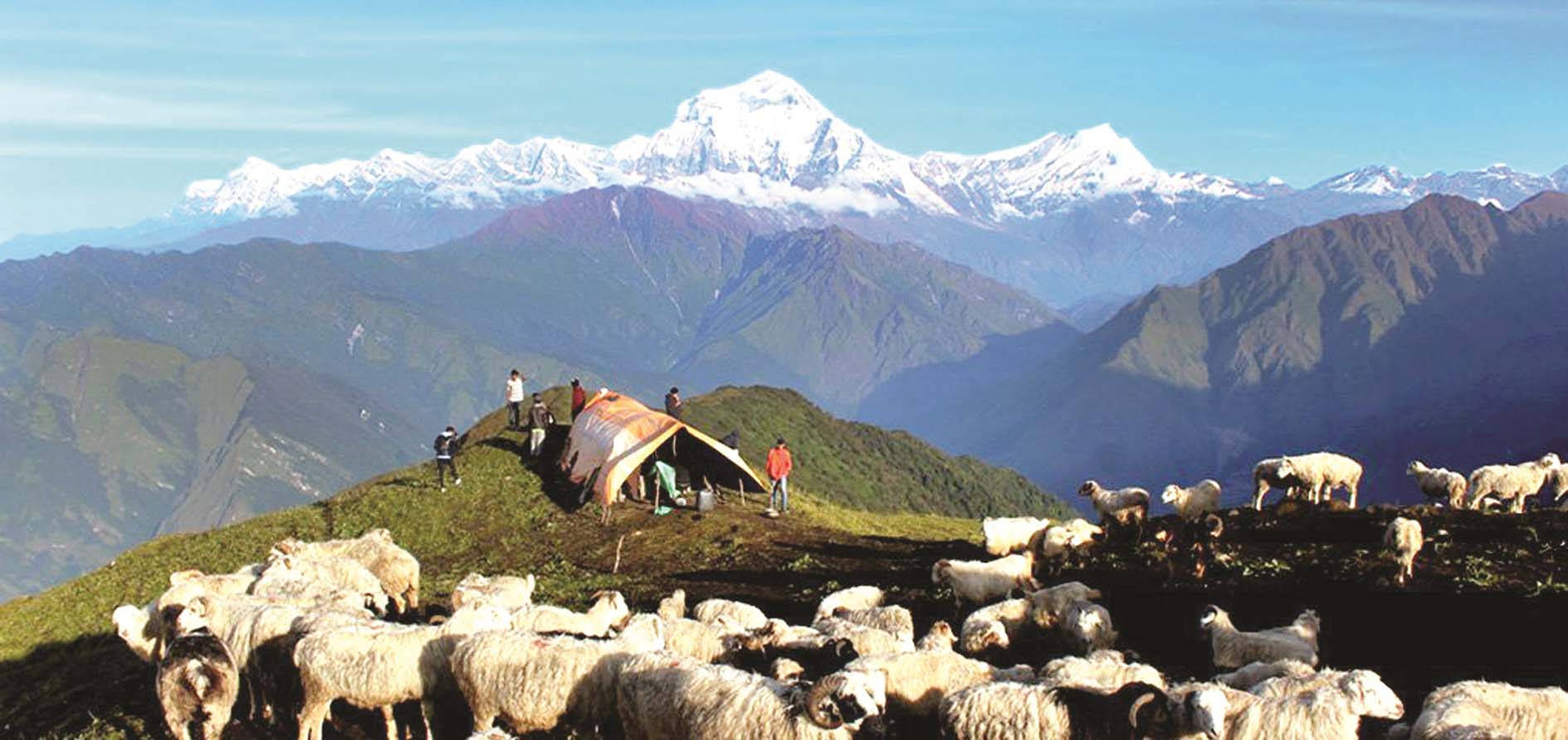Wool processing centre in Mustang to boost cashmere industry

By Ranju Kafle, Kathmandu, Aug. 24: A group of entrepreneurs from the domestic cashmere industry have established a wool processing centre in Charang, in Mustang district from their own efforts.
The centre is likely to support the livelihoods of farmers from high-hilly districts by ensuring a fair price for their produce as well as by making the locally produced wool available in the domestic market.
An association of cashmere industrialists, under the Nepal Pashmina Industries Association, has established the centre in an effort to ensure that wool and its threads for cashmere products are abundantly available in the country. And they had a plan to expand such centres to the western part of the country targeting the farmers in Dolpa, Mugu and Humla.
Dhan Prasad Lamichhane, vice president of the association, said that they established the centre to replace imported raw materials with locally produced ones. “We aim to use our resources instead of sourcing them from elsewhere,” he said.
Lamichhane, who visited several high-hilly districts along with his entrepreneur friends recently, has been a cashmere entrepreneur for a decade now. He makes at least a million rupees in profit from his Kathmandu-based firm annually.
According to him, cashmere manufacturers have been importing raw materials from Mongolia and China to prepare exportable products every year, but the outbreak of the COVID-19 pandemic left that unmanageable. He said that many such entrepreneurs had agreed on using locally produced raw materials in cashmere products.
“One of the most important objectives of establishing the centre is to make use of our own resources rather than import them, which has become increasingly uncertain in the last two years,” he said.
The newly established centre will collect wool produced from mountain goats, process it and sell it directly to the entrepreneurs. Doing so will not only ensure a fair price for the wool farmers, but it will also provide raw materials to the manufacturers, Lamichhane said. Prior to this, farmers used to supply their woollen threads to the neighbouring Tibetan market, but their demand plunged to zero in the wake of the pandemic and subsequent lockdowns.
Dorje Lama, a farmer who has 80 mountain goats on his Lomangthan farm, said that the threads went unused in the aftermath of the pandemic because neither the farmers had access to the market nor the traders came to visit their farms. However, upon learning about the centre, he is hopeful that things are set to make a turnaround. “Wool produced from mountain goats will now find a place to be processed, and the farmers are set to benefit from it financially.”
According to him, a group of people from Kathmandu purchased 2,000 kilograms of wool at a cost of nine million rupees from the centre recently. The country exports cashmere products worth a billion every year, and the industry consumes 195 tonnes of raw materials for production.
The centre, when operated at full capacity, is expected to curb 30 per cent import of such raw materials. “Wool from mountain goats which used to be exported to Tibet in previous years will now be utilised in domestic industries. That will support livelihoods of a great many Nepalis,” Lamichhane said
Recent News

Do not make expressions casting dout on election: EC
14 Apr, 2022
CM Bhatta says may New Year 2079 BS inspire positive thinking
14 Apr, 2022
Three new cases, 44 recoveries in 24 hours
14 Apr, 2022
689 climbers of 84 teams so far acquire permits for climbing various peaks this spring season
14 Apr, 2022
How the rising cost of living crisis is impacting Nepal
14 Apr, 2022
US military confirms an interstellar meteor collided with Earth
14 Apr, 2022
Valneva Covid vaccine approved for use in UK
14 Apr, 2022
Chair Prachanda highlights need of unity among Maoist, Communist forces
14 Apr, 2022
Ranbir Kapoor and Alia Bhatt: Bollywood toasts star couple on wedding
14 Apr, 2022
President Bhandari confers decorations (Photo Feature)
14 Apr, 2022










